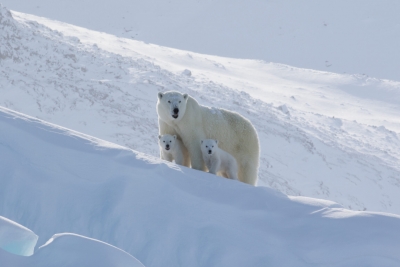
Did you know two-thirds of the world’s polar bears live in Canada? Besides, in Nunavut, Canada, and the vehicle licence plates were in the shape of a polar bear for a long time; they now display an image of the polar bear. Polar bears are often spotted on sea ice hunting seals which make up most of their diet.
In fact, the city of Churchill, Manitoba has become known as the ‘polar bear capital of the world’ due to the fact that some 900 polar bears live, or spend most of their time, in that region. Canada is also home to the southernmost polar bear subpopulation. While the bears usually keep to the northern parts of Canada, they can be found as far south as the Southern parts of Hudson Bay, in Manitoba, Ontario and Quebec.
Bears are excellent swimmers and can travel great distances, but they do not spend the majority of their time in the water if they can help it, nor do they hunt as effectively in the water. Instead, they usually hunt on the ice, seeking out seals that breach the ice to breathe. Similarly, polar bears will swim between ice flows during an ice break up, but extended swimming can become dangerous for them, especially when young. As ice caps melt and the spaces of open sea grow, polar bears have been forced to swim longer and longer distances, causing stress and endangerment to the species at large. The threat to the polar bear’s habitat is the largest threat to the polar bear population in general. As safe and stable habitats decrease, polar bears are having to face more and more dangerous scenarios, difficult hunting conditions, and treacherous living conditions. Unfortunately, these factors have put polar bears in the vulnerable category in the last decades.
Climate change is drastically affecting polar bears, but it also poses a threat to several other species in the area. This, in turn, means the prey that the bears rely on is also decreasing. Not only are hunting grounds being reduced year after year due to the melting and retreating ice, making it harder for polar bears to hunt, but the prey that also relies on these ice caps are suffering. Polar bears primarily eat seals, and hunt those that live on or under the frozen polar ice caps. As the ice caps melt, the seals are experiencing a decrease in habitat as well, and their populations have suffered. This means that not only are hunting conditions becoming more difficult for polar bears, but the prey is also becoming more scarce.
Credit : WorldAltlas
Picture Credit : Google




